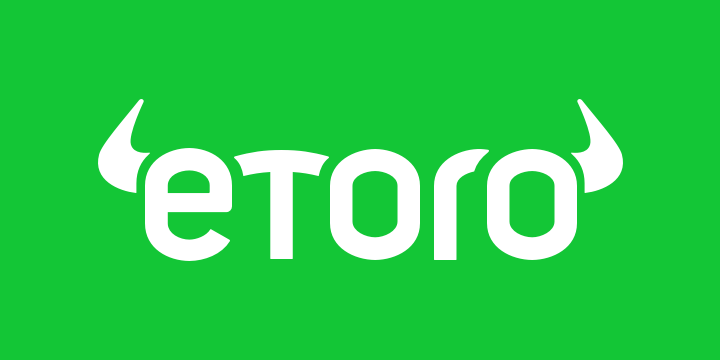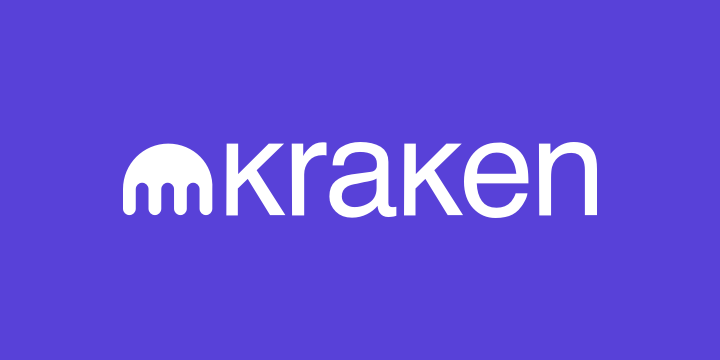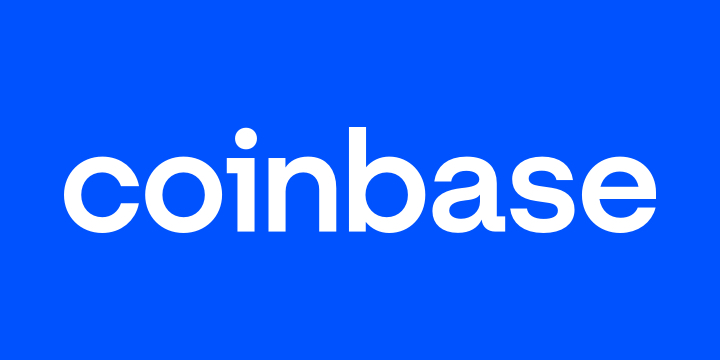How to Trade EOS in 2024 - Complete Guide
...
The volatility of the crypto market has seen many traders take advantage. When cryptocurrencies such as EOS change price frequently and rapidly, it can provide an opportunity for savvy traders to turn a quick profit.
This guide explains in detail how you can trade EOS. You will learn to predict future prices with better accuracy by relying on fundamental and technical analysis using graphs and charts. If you want to trade EOS, don’t forget that it’s a continuous endeavour that requires you to stay aware of the relevant EOS-related news and developments to earn significant gains.
What Is EOS Trading and How Is It Different From a Standard Purchase?
Before you spend any money on EOS investment, keep in mind that holding EOS tokens and trading them are two different things. Purchasing EOS means you own the digital currency and have the right to hold, sell, and use it the way you want. Trading EOS, on the other hand, means you bet on the future price of the token relying on financial contracts offered by a brokerage. In this case, you don’t own the currency but buy and sell derivative products.
When you start trading EOS on brokerage platforms, you will see there are three popular derivatives you can use to capitalise on EOS price fluctuations:
- CFDs – A Contract for Difference, commonly known as a CFD, is a financial derivative that reflects the changing price of EOS in real-time without requiring the trader to buy the currency. You can buy CFDs when the EOS price is low and sell them when it is high to make a profit.
- Futures – These are time-bound derivatives that a trader has to close at a time specified or earlier. If the price goes in the direction of your prediction, you make a profit.
- Options – These contracts give the trader the option to make a trade they believe will be profitable in the future. There is no obligation to make this trade, however, and if it would be unprofitable, the trader pays only a small fee for the contract itself, called a premium.
Compared to holding EOS tokens, trading gives users a much more convenient and quicker way to make profits.
It is highly recommended that you choose a broker service that’s registered and regulated to avoid any scams or frauds. Top brokers provide you with a wide variety of features to deliver a better trading experience. You have to bear in mind that the quality of the trading service and its features depend on where the broker is registered, as well as your location. The nature of derivatives and the extent of the leverage offered may vary too.
Many new traders go down the copy-trading route, which enables them to mirror or copy the moves of high-profile traders. On one hand, this offers a better chance of succeeding as you follow experienced traders’ trading decisions, but there’s also some risk involved. High-profile traders often have a large trading volume which provides them with a cushion to hedge their bets, and following them without research may lead you to major losses. With large volumes, their transactional charges form a minuscule percentage of their profits, while that’s not the case with new traders.
Where Can I Trade EOS?
Reviewing the top broker options currently accessible, we have shortlisted the best trading platforms for you to start trading EOS.
Online Brokers
Brokers are primarily digital trading platforms where you can buy derivatives of EOS when the price is low and sell them when it is high. That being said, when you are trading through brokers, you never actually buy the EOS. Instead, you buy contracts that give you the right to your initially invested capital along with any profit or loss you make on a trade when it either closes or expires. With the exception of a few brokers, almost every trading platform today offers crypto derivatives.
Benefits of Using a Broker to Trade EOS
- No need to purchase EOS and deal with storage and management issues
- No need to get a cryptocurrency or EOS wallet
- Short-term strategy as compared to holding EOS coins
- Far more quick and convenient than holding coins
- Enhance profits through leveraged trading (ensure risk assessment)
- Start investing with as low as $100
- Brokerage services are regulated and registered for better security
- Transparency in terms of transactional costs
- Loads of analysis tools for technical evaluation
Derivative Exchanges
In the beginning, cryptocurrency exchanges that sold EOS were focused on buying and selling digital assets with an easy registration procedure. In the last few years, all types of trading platforms, including exchanges, have expanded their service range to offer derivatives. You can trade EOS on multiple exchanges without requiring a broker. OKEx and Binance are two of the top exchanges that offer derivatives, including options and futures, along with the ability to use up to 100x leverage trading.
Benefits of Using an Exchange to Trade EOS
- More versatile than brokers as you can also buy and sell digital coins
- Ability to withdraw your EOS coins whenever you want
- Exchanges bring a wider range of cryptocurrencies and altcoins for trading, as well as deposits and withdrawals
- A user-friendly trading experience, unlike complex broker contracts
- Ability to do leveraged trading up to 100x
- Services of exchange and broker combined in one
Our Step-by-Step Guide on EOS Trading
We have created a detailed guide on how to start trading EOS, with each step carefully explained and detailed for your understanding.
1. Combine Fundamental and Technical Analysis
All types of crypto trading require expertise in two different kinds of information evaluation. Both types have their own variables and can result in different outcomes. Your objective is to process both types of information and make an informed decision.
When we talk about fundamental analysis, it is more related to the general properties of EOS rather than technical market performance. That’s why it includes:
- News – Being an internationally-traded digital asset, the price of EOS can be swayed by a multitude of factors. That’s why it is essential to keep an eye on the latest developments, regulations, updates, and pretty much anything that can drive traders’ behaviour.
- Supply and Demand – Like any other digital asset, EOS is also subject to price volatility because of supply and demand dynamics. Currently, there’s a supply of over 1 billion EOS tokens, and an increase or reduction in that amount can move the price one way or the other.
- Follow the General Rules of Economics – Increase in demand drives up the price of EOS while an increase in supply drives the price down. Watch out for the interplay between these dynamics.
Technical analysis is about studying data, stats, and analytics to make an evidence-based decision. Relying on a diverse variety of statistics, you can evaluate the potential future price of EOS, which can help you make informed trade decisions. Some of the most popular technical indicators used by traders include:
- Moving Averages – This indicator relies on prices that have been set at intervals using past statistics. A moving average signifies how the value of EOS moves and what it’ll be in the future in the light of available data.
- Relative Strength Index – This demonstrates market momentum and provides a summary telling you whether EOS has been overbought or oversold. A surge in price with an overbought signal implies that a price correction is coming. On the other hand, a reduction in price with an oversold signal demonstrates that EOS price is expected to increase.
- Moving Average Convergence Divergence – When we evaluate the difference between a 26 and 12-period exponential moving average (EMA), it is known as Moving Average Convergence Divergence (MACD). This is a very useful technical indicator that tells you when traders are looking to buy
If you want to become an expert trader, you can explore other technical indicators, including depth charts, Golden Cross patterns, and Fibonacci levels.
2. Choosing a Trading Strategy
Although every trader is looking to make money, you need to identify the best strategy for yourself. Here are some of the top EOS trading strategies you can rely on.
- HODL: ‘Hodl’ is basically a misspelling of ‘hold’, popular within the crypto community, which means that you buy and hold your EOS coins. This strategy involves buying low and holding for months or even years before hopefully selling at a great price hike.
- Day Trading: EOS can be pretty volatile throughout the day, giving traders many opportunities to capitalise on. These price movements can be used to open and close positions in a matter of a few hours or minutes.
- Swing Trading: This is quite similar to day trading, but the trade times are a bit longer, ranging from a few days to a few weeks. This can only be done with highly accurate technical analysis.
- Hedging: This is a risk minimisation strategy where you protect your capital by opening a position in the opposite price direction to your original investment. This means that whatever the outcome, you will always receive some profit.
- Scalping: Once again, this strategy is quite similar to day trading, except trading times are as low as a few seconds to a few minutes. This yields smaller profits, but you also have time to conduct more trades.
There is a wide range of trading strategies, including news trading, copy trading, and many more. Each strategy comes with its own set of pros and cons. Ultimately, you have to decide which strategy works best for you.
3. Select an Appropriate Platform for your Needs
To ensure your trading success, you need the best platform that suits your needs. The first thing you need to do is decide whether you want to go with a dedicated broker or a derivative exchange. While both services are pretty similar, the broker will have a more trading-focused platform with regulatory compliance. They also allow for larger trading volumes at affordable transaction fees. On the other hand, exchanges are suitable for those who want to take a greater risk or trade EOS against a wider range of coins.
Non-compliant platforms aren’t only prone to instant shutdowns at any time; they might also be scams to get your hard-earned money.
4. Setting Up Your Account
Once you have gone through the step above, you need to register with the platform. You only require a valid email address for the first phase. Once the account has been verified through your email, you’ll go through an identity verification process which is mandatory under Anti-Money Laundering (AML) and Know Your Customer (KYC) regulations. You can provide any type of government-issued ID to verify your identity.
After verifying your identity, you can make the minimum deposit in either cryptocurrency or fiat money subject to the trading platform you’ve chosen. Go to your account wallet and choose the deposit option, from where you can select any of the supported payment modes.
5. Prepare your Trading Position
After adding your deposit, go to the Trade option, and you’ll see an interface. Different brokers and exchanges use a different layout, while most options are quite similar such as sell, buy, order book, open positions, etc. Here are a few examples of common trading interfaces.
If you are just starting out as an EOS trader, you may feel that this is a lot to take in. Here are some standard definitions used in trading for your convenience:
Short or Long Positions?
You open a long position when you believe the value of EOS will rise. You buy low and sell high and pocket the difference. What happens when you think the price is going to go down? Well, in that case, you open a short position. In this case, you sell high then buy low, still making a profit while the market recedes. Shorting is a high-risk and high-reward strategy since you can lose what you’ve invested if the market recovers.
Limit or Market Order
Any order where the EOS token’s market price is used when opening a trade is called a market order. Since you don’t set the price, you only see buy and sell options if you choose a market order. If you are looking for different or better prices, you’ll need to use a limit order. Here you’ll need to specify the rate you want, as well as the total amount. Market orders can be executed instantly, while limit orders may take time.
Trade Position Amount and Leverage
Trade position amount is simply the total capital you’ve invested in the order. You can increase the profit potential by leveraging that amount to make the most of market conditions. On trading platforms, you can see leverage or margin in the form of ratios. For instance, 20:1 means 20x leverage. If you put in $100, your profit/loss will be calculated based on $2,000. While this strategy can enhance your profits, it can also increase your losses. That’s why risk management is imperative.
Risk Management: How to Decide the Right Stop-Loss and Take Profit values for Your EOS Trade
Stop-loss orders enable traders to reduce their losses if the market doesn’t align with their predictions. You need to type in two key EOS prices – the first is the stop price, at which the order is activated, and the second is the limit, at which price the position will close. Relying on your technical analysis, you can initiate stop-loss orders below key support levels when you know that the crypto market is going to bounce back. If the EOS price continues to decline and reaches the support level, the order gets triggered, and your position is closed to prevent significant losses.
Review and Execute Your EOS Order
Re-check everything you have entered and ensure all the values and options are as intended before placing an order. Make it a habit to re-evaluate everything to ensure you don’t make any typos or errors that can lead to financial losses. After you are certain, you can start trading by clicking on the ‘Sell’ or ‘Buy’ button.
Close Your Trade for Profits or Limit your Losses
An order that you execute with sound technical analysis is more likely to turn over a profit. You can either close your orders manually or rely on the take profit option, which automatically closes the order when certain profitability is reached. Using the take profit option with a stop-loss can minimise your risk to a greater extent.


